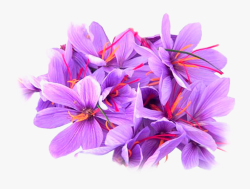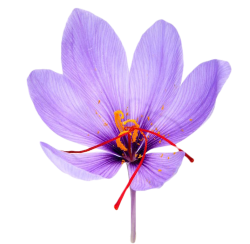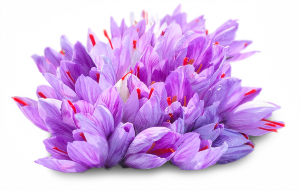Saffron with the common name saffron and the scientific name crocus sativus is the most precious agricultural plant on the planet and it is the only plant whose buying and selling unit is weight and gram instead of tons and kilos. Saffron is from the lily family and in the Mediterranean and West Asian climates from latitude 30 to 50 degrees north and longitude 10 degrees west to 80 degrees east in the very low rainfall areas of Iran – Turan, which has cold winters and hot summers without If it rains in the beginning of the autumn season, it spreads. One of the prominent features of this plant is the appearance of its flower before any other vegetative organ. Its growth starts in autumn. End of growth in spring. The lack of fertile seed production despite the production of abundant full flowers and the need to harvest the flowers early in the morning before the weather warms up.Propagation of saffron is common only by the underground corm. Harvesting includes picking the flowers and separating the stigma from other parts of the flower and finally drying the stigmas. The average yield of saffron is about 10 kilos of dry saffron per hectare in the case of full observance of agricultural principles. The lifespan of flowers is about 3 to 4 days, on average, each kilo of saffron flowers is equal to 2170 flowers, and from every 78 kilos of flowers, usually 1 kilo of saffron is obtained in a bunch (stigma with cream) to prepare 1 kilo of saffron. Sargol needs about 105 kilos of flowers and to prepare 1 kilo of premium saffron saffron (the maximum length of the cream remaining and connected to the stigma is less than 3 mm) requires about 103 kilos of saffron flowers After harvesting the flower and separating the stigmas, the most important parameter regarding the quality of saffron is how to dry the stigma, which should be done in a clean environment and in a short time (about 2 to 3 hours) and at a temperature of about 50 to 60 degrees Celsius in an electric oven. Take The Spanish drying method (alcohol-heater) is next, followed by the microwave drying method. Currently, all stages of flower harvesting and stigma separation and saffron technology are done by hand.

The stigma of three branches of saffron is its most important commercial part. This part of the flower contains fatty substances, mineral salts and mucilage. The scent of saffron is due to the presence of a bicolor essential oil containing tropene and an oxygenated compound with cineole called safranal. And the taste of saffron is related to the bitter heteroside picrocrocin. The colored substance of saffron is related to the presence of a substance called crocin.
The best way to separate the ingredients in saffron for home food use is to dissolve crushed saffron in a mixture of warm water and liquid oil (with a ratio of one part oil and twenty parts water in a brewed form for half an hour). The amount of consumption for each person is usually about 1.15 grams per meal. The ideal environment for storing saffron is a dry and cool place away from light.


